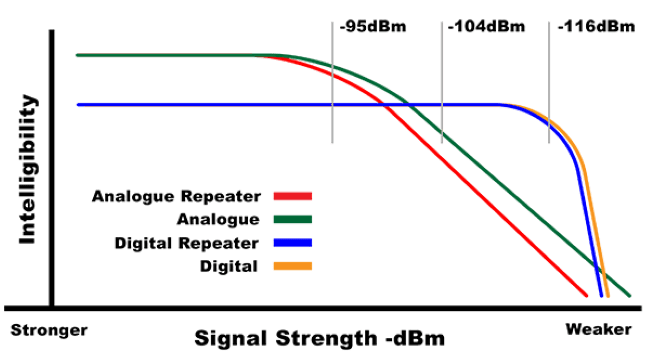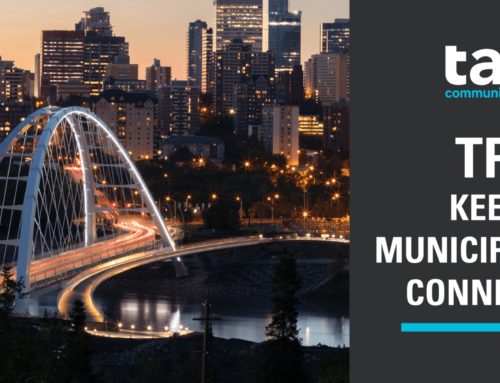Let me introduce you to DMR
Digital Mobile Radio, often referred to as DMR an international digital radio standard developed by the European Telecommunications Standards Institute (ETSI).
What makes DMR stand out from some of the other digital modes is that it utilizes TDMA (Time-Division Multiple Access) to divide a single frequency into 2 distinct “channels” or time slots. By doing this, you can have two conversations going on at the SAME TIME, using one frequency.
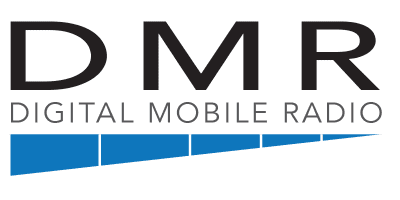
Advantages of DMR
Doubling of capacity in existing licensed channels
DMR enables a single 12.5 kHz channel to support two simultaneous and independent calls. This is achieved using Time Division Multiple Access, TDMA. Under TDMA, DMR retains the 12.5 kHz channel width and divides it into two alternating time slots A and B (illustrated below) where each time slot acts as a separate communication path. In the figure, radios 1 and 3 are talking on time slot 1 and radios 2 and 4 are talking on time slot 2.
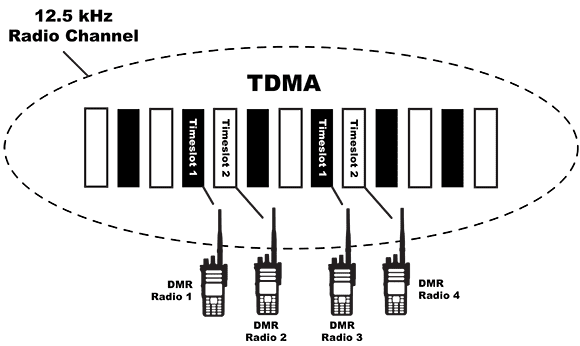
Efficient use of infrastructure on existing hardware
With DMR TDMA you get two communications channels with one repeater, one antenna and a simple duplexer. Compared to FDMA solutions, two-slot TDMA achieves stable two-channel equivalency using single-channel equipment. No extra repeaters or combining equipment are required, and there is lower drain on air conditioning and less back up power supplies needed at a repeater site.
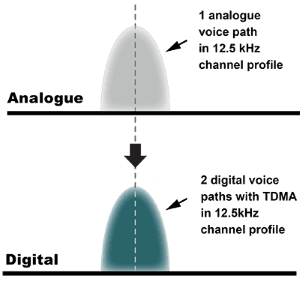
Advanced control features
The DMR standard allows for the ability to use the second time-slot for reverse-channel signalling – that is, instructions in the form of signalling being sent to the radio on the second time slot channel while the first channel is in a call. This enables priority call control, remote control of the transmitting radio, or emergency call pre-emption and gives precise control and flexibility to the operator of a radio system. FDMA systems cannot deliver similar functionality because they are limited to one path only per spectrum channel.
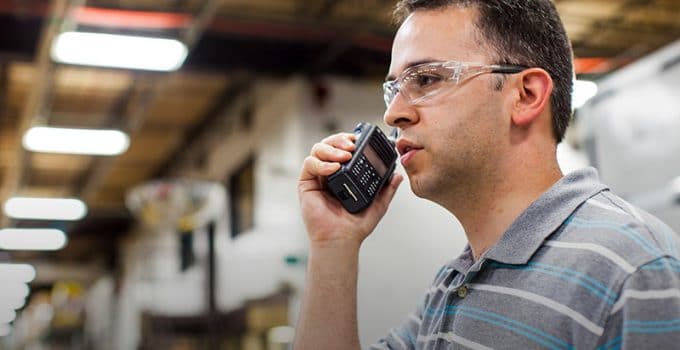
Being TDMA format it doubles (2 talk paths/12.5 Khz) plus more
While voice is using the first time slot then the second time-slot can, in a TDMA system, be used for transmitting application data such as text messaging or location data in parallel. This is useful, for example, in dispatch systems that provide both verbal and visual dispatch instructions. This is enhanced data capability is becoming increasingly important in data rich environments
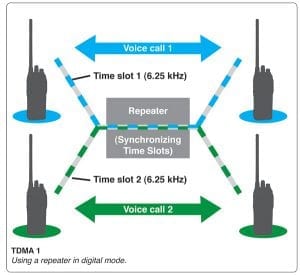
Security vs open analog
The TDMA creates a entry level of security just by its format. You can enhance to the full government home land level of secure audio, with little to no impact on the clarity of the audio. DMR is a fully public open standard backed by a wide variety of vendors meaning that buyers can be assured of continuity of supply. More suppliers results in more choice for users, more rapid product development and lower prices from competitive pressures.
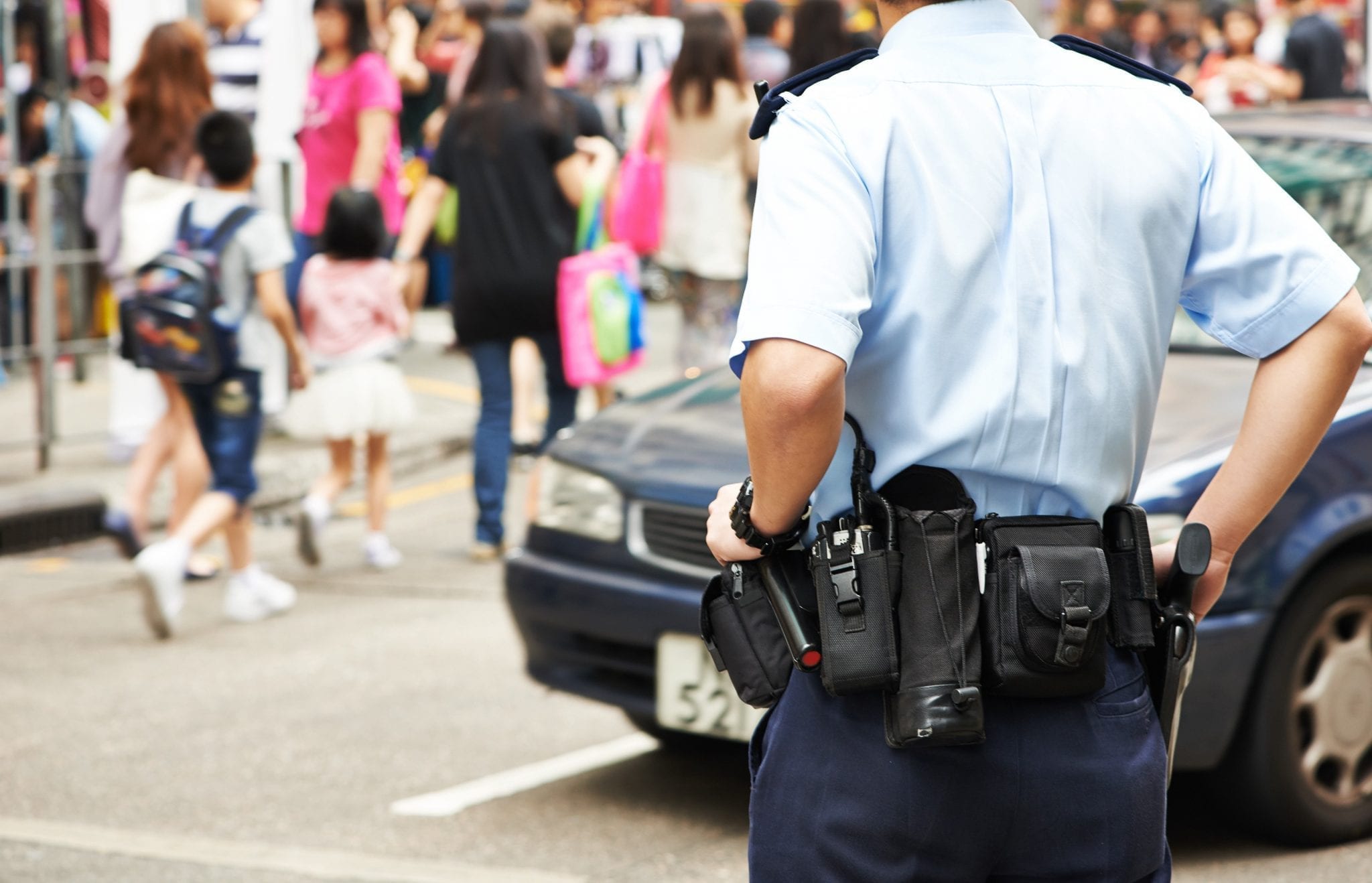
Enhanced audio performance
DMR digital technology provides better noise rejection and preserves voice quality over a greater range than analogue, especially at the farthest edges of the transmission range. Through the use of coders and other techniques, digital processing is able to screen out noise and re-construct signals from degraded transmissions. Users can hear much more clearly — increasing the effective range of the radio solution and keeping users responsive to changing situations in the field.
